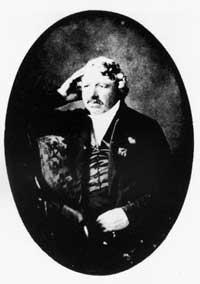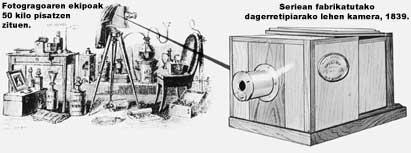Before the photograph appears
Today, who doesn't have a photo in his pocket, whether from his beloved, his children or at least his card? And what about our homes? There is a photon, sitting or on a table. The photos are widespread and we find it difficult to think of a world without them. How did our ancestors live without photos? To answer this question we must not go far.
Let’s see what Dickens tells us last century in his “last Pickwick Club roles.” In an irritating way, he tells us what they did a hundred years ago in English prisoners to capture the image of man. The story belongs to a prison they have taken Pickwick to and upon arrival they tell him that he has to sit until he makes his image.
- “To make my image?” asked Mr. Pickwick.
- Yes, your image and appearance, sir, was answered by a powerful prisoner — Know that we are very skillful taking pictures. Without time to return, your drawing will be done. Lord, sit as if you were in your house.
Heeding the invitation, Mr. Pickwick sat down and then Samuel (his slave) whispered in his ear that they probably understood here in a special meaning.
- Sir, this means that prisoners will take care of your image in order to distinguish it from visitors.

So the session began. As a chunky prisoner looked over Mr. Pickwick, another comrade stood before a new prisoner and stared at him. The third of the prisoners, focusing on the tip of Mr. Pickwick's nose, began to carefully investigate his appearance.
- They finally finished taking his image and told Mr. Pickwick that he could enter prison.
The role of these “photographs” kept in the head was played by old “personal signs”. Who does not know the aspect of Pastor Joanes of “Garoa” by the Ondarrutarra writer Txomin Agirre? As he wrote to us:
“The man was the water!”
Seven feet and a half long, straight to the image of the tender poplar, since the thicker beech is wide, like, dense art, like non-holly. It was the comb when I met
Joanes. The venous arms of the Montese pastoril, his oñas, his breasts were still strong.”
Although the description is wonderful and of great value from the literary point of view, if we really wanted to know what Joanes was like, today a simple photograph of him would give us more information than those words. In any case, Txomin Agirre did not know how to use the camera and fortunately gave us that beautiful passage of our literature.
Photography was invented in the middle of the last century. Initially it was done using the method called dagerrotype. This name was called Gorasarre of its inventor, Dagerre of Basque origin. This method recorded the images in metal sheets, but it was very uncomfortable, since to make an image you had to remain still for dozens of minutes in front of the tool.
However, getting the image of a person without the participation of any painter was something new and surprising and people had a hard time getting used to that idea. In a Russian magazine of 1845 the following anecdote is told:
There are people who cannot believe that daguerreotype works without help. A respectable man went to portray himself. The photographer sounded, adjusted the glass and placed the iron, looked at his watch and left. While the photographer remained in the room the respectable lord was sitting and not moving, but just leaving the door, the one who wanted to have the photo did not consider that he should be standing: he got up, took his nose, looked at the daguerreotype (apparatus) everywhere, approached his eye to the glass and, moving his head, thought:
“How curious! and began to walk through the room.
When the photographer returned he was surprised by the door and called him saying:
- But what are you doing? Have I not told you to sit and stand?
- Yes sir, and so I have been. I have risen when you are gone.
- Then you had to be still.
- Why be still?
The reader may think that we are currently far from these meticulous photographic ideas. However, still most of us have not fully accustomed to photography and, incidentally, we have to say that those who know how to look at the photo correctly are very few. Many will answer that you just have to take the photo and look. But it's not as easy as it seems.
We do not know how to extract all its juice from the photos, as widespread as the thousand things we have in our houses. Most photographers, and of course the rest, do not look at the photos correctly. If the art of photography has more than a century and yet many have not yet learned to look at the photo. However, this gives me a topic for another job and for the moment I leave it.

Buletina
Bidali zure helbide elektronikoa eta jaso asteroko buletina zure sarrera-ontzian











